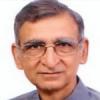Corruption is a big menace in different countries, including ours. We witnessed the spectacle of movement against corruption demanding for Jan Lokpal, at dharna at Jantar Mantar in 2011. The battle cry of that surge was primarily against Congress, and as a marginal balancing act occasionally BJP was also named. Anna Hazare who was projected to be the central leader was presented as second Gandhi. He was flanked by the current Chief Minister of Delhi Mr. Arvind Kejriwal, for whom the central concern was Jan Lokpal and who posed as if that was the panacea for all the ills of the nation. Not to be left behind the present Lt. Governor of Pondicherry, Kiran Bedi was at her best performance in articulating this need. Two more names need to be mentioned, one Baba Ramdev, the entrepreneur taking Patnajali production to new heights of business and Sri Sri Ravishanker, all these currently quiet on the issue of corruption.
The mass sentiments were created to against leaders to the extent that people were writing “mera Neta Chor Hai,” on their hands (My Leader is a thief). All this was aimed at targeting the Congress. We had witnessed arrest of those corrupts like Satyam’s Raju during Congress regime. Also in 2G scam many heads rolled, now as the matters stand the whole scam is supposed not to have existed and the vehement champions of Congress corruption are at the helm of power, as the 2 G hoax has been deflated in the Courts.
That is past. Our memories are short. Having defamed Congress on the issue of corruption the worthies who led the campaign have safely been promoted either in their political clout or business enterprise. On the back of this the present prime Minster rode the anti Congress wave to proclaim two major jumlas (phrases). One, Na kahunga: Na Khnae dunga (Neither will I do not indulge in corruption nor will I let others do the same). And that; elect me as a Chowkidaar (watchman) to protect nation’s wealth. His managers worked hard and Nation seemed to believe in these Jumals.
Now there is this Neerav Modi on the horizon. Mr. Neerav Modi, the diamond entrepreneur, seen standing behind Mr. Modi in Davos, ran away with 11300 crores, and is untraceable by the Government. The loot was cleverly organized through breaking the system of loans, where he was helped by Punjab National Bank officials, and without any collateral security he could steal the coffers of the bank. His uncle Mehul Choksy, whom Narendra Modi affectionately addresses as Mehul bhai, also made good his escape, announcing to his employees that they will not be paid their salaries and dues, throwing them to wolves of unemployment and hunger. These are not the only affluent entrepreneurs, who have been around our Prime Minster. Another Mr. Kothari of Rotomach pens has also cleaned to coffers to good extent and as an exception has been arrested. One also recalls of the pattern of great escape of these plunderers of public money. My Vijay Mallaya, Kingfisher fame, made it to Rajya Sabha, and with 9000 crores of bank dues made good his escape as CBI loosened the LookOut notice, not to stop him from leaving the country, but telling authorities to just inform when he leaves. One also recalls of Lalit Modi, whose performance has been on the similar line, and he has been the beneficiary of the good association of BJP’s Sushma Swaraj and Vasundhara Raje Scindia.
Most of the promises Mr. Modi made in the wake of 2014 elections turned out to be hoax. Bringing back black money from abroad, putting Rs 15 lakhs in everybody’s account, reducing the prices of commodities, increasing the strength of Rupee; to name a few. In a way his promise of Chowkidar coming to be another jumal should be no surprise. No doubt there are severe problems in our Banking system. There are loopholes, which those in circles of Narendra Modi have exploited. The point is where the checks and balances are? How come most of the big fraudsters have made good their escape? Are they too clever or the methods of Narendra Modi give them more opportunities give them ample opportunities to run away with the booty?
All said and done Narendra Modi has been the darling of corporate sections of society. In Gujarat after the carnage of 2002, he created a make believe World of Vikas (development), Gujarat model of Development. This model basically involved giving the industrialists all the facilities to do business as they liked. So Tata got Nano shifted to Gujarat and also told his colleagues that you are not on right track if you are not doing business in Gujarat. The business houses of Ambani and more particularly Adani made great strides to jump up in the scale of business. Many of the likes of Neerav Modi may be close to these business houses, whose plunder projects are synonymous with Vikas for our Prime Minster.
The wonder is where are anti corruption warriors, Anna Hazare, Kejriwal, Kiran Bedi and Ramdev; are sleeping when the corruption of the bigger order is in progress right under their nose? One can mention that Anna Hazare movement was planned by RSS think tank Vivekananda International Center, and the full mobilization was planned by this parent of BJP, surely it yielded rich political dividends for its electoral child the BJP.
So while Narendra Modi slept, Neerav Modi and friends made the heist and ran away. The public money to such a great amount has been plundered. There is a talk of privatization of public banks! Can these entrepreneurs be trusted to keep the public interests in mind if all this is handed over to them? The need for social auditing and control over hard earned public money could never have been more empahsised. Narendra Modi’s soft corner for Corporate World has been there for all to see right from Gujarat days. Time to wake up!






Comments
Add new comment